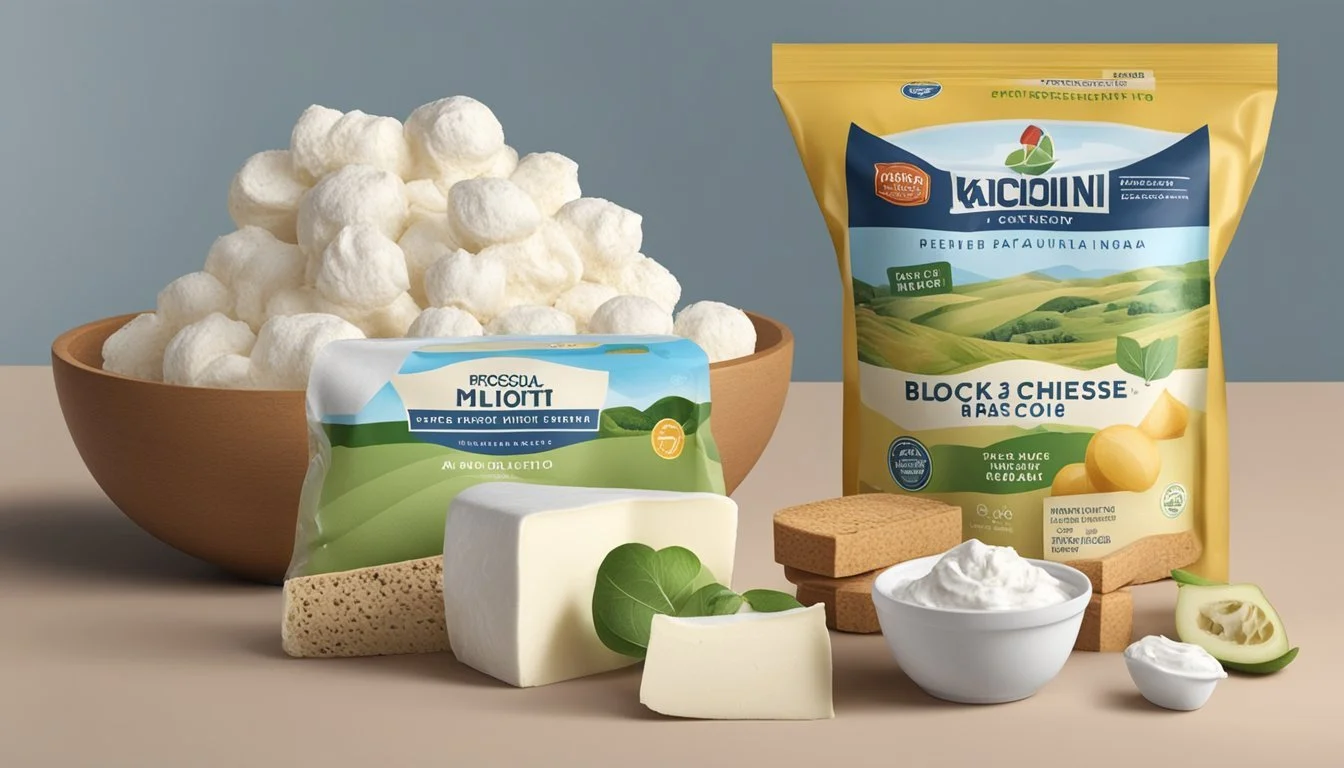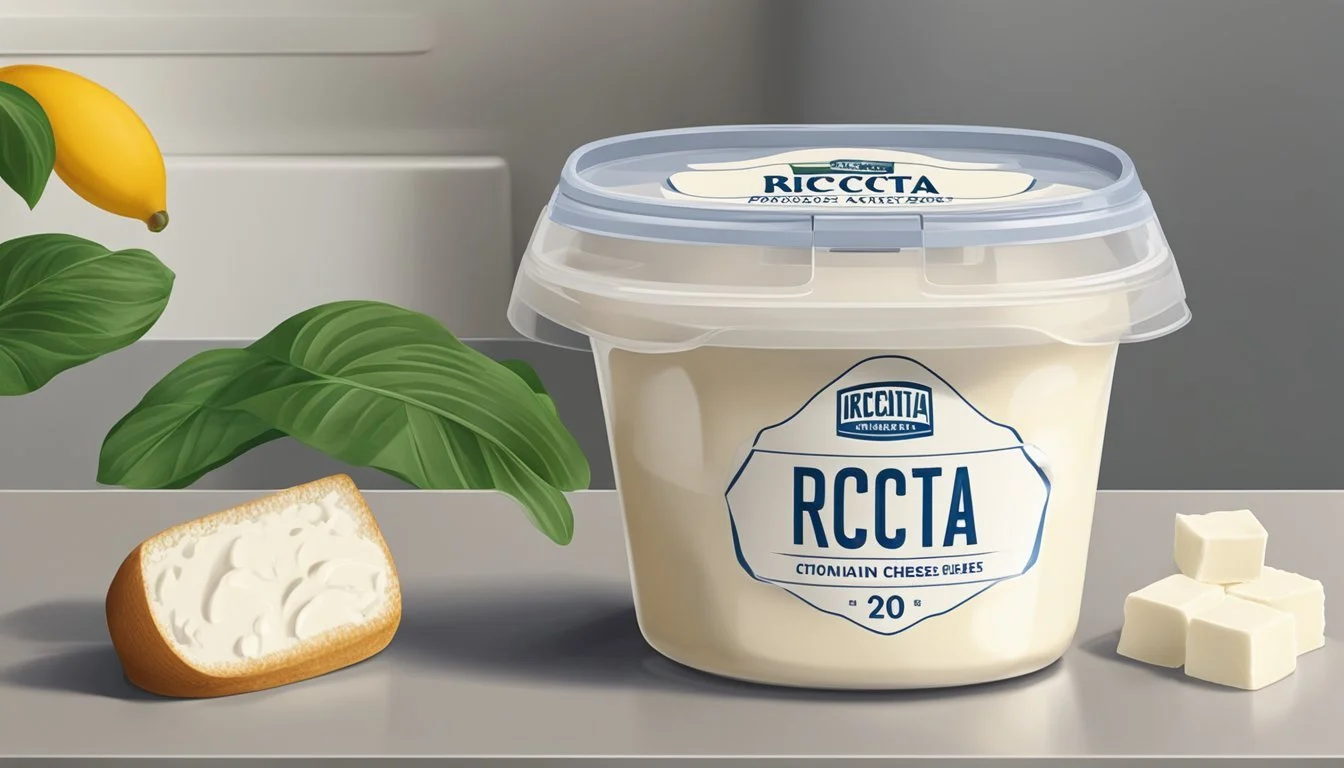How Long Does Ricotta Cheese Last?
Understanding Shelf Life and Storage Tips
Ricotta cheese (What wine goes well with cheese?), with its delicate flavor and rich texture, is a versatile ingredient beloved in both sweet and savory dishes. Yet, consumers often question its shelf life and how to maximize its freshness post-purchase. When stored properly in the refrigerator, unopened ricotta can remain fresh up to two weeks past the sell-by date. Once opened, the freshness is best preserved if the cheese is kept in an airtight container, with its lifespan shortening to roughly one week.
Understanding the signs of spoilage is vital for food safety. With ricotta cheese, indicators such as an unpleasant smell, a change in texture to excessively dry or watery, or any visible mold growth are clear cues that the cheese should no longer be consumed. To enjoy ricotta cheese within its optimal time frame, storing it at or below 40℉ is recommended, as higher temperatures accelerate spoilage.
For those who require a longer storage period, freezing ricotta cheese is an option, though it may slightly alter the texture. In the freezer, ricotta can be stored effectively for up to three months. Thawed ricotta works best in cooked applications, as the freezing process can cause separation of liquids and solids, impacting its creamy consistency.
Basics of Ricotta Cheese
This section explores ricotta cheese, focusing on its identity as a dairy product and the distinctions between its unopened and opened states.
What Is Ricotta Cheese?
Ricotta cheese is a soft, creamy dairy product known for its light texture and slightly sweet flavor. It is traditionally made from the whey left over from the production of other cheeses, such as mozzarella or provolone. Unlike hard cheeses that undergo a significant aging process, ricotta is a fresh cheese intended for relatively quick consumption. It's a staple ingredient in various dishes, ranging from cheesecake to lasagna, providing a rich and moist element.
Unopened vs Opened Ricotta Cheese
Unopened Ricotta Cheese:
Shelf Life: When unopened and stored in the refrigerator at or below 40℉, ricotta cheese can last up to two to three weeks past its sell-by date.
Storage: The original packaging is usually sufficient to maintain its freshness until the sell-by date.
Opened Ricotta Cheese:
Shelf Life: After opening, ricotta should be transferred to an airtight container and can be expected to last for about one week when properly stored in the fridge.
Storage Tips: To extend its freshness after opening, wrapping in plastic wrap or pressing out excess moisture before sealing can be beneficial.
In comparison to hard cheeses, both unopened and opened ricotta cheese have a shorter shelf life due to their higher moisture content. Homemade ricotta cheese typically has an even shorter lifespan and should be consumed within a few days due to the absence of preservatives. Regardless of its state, it is crucial to store ricotta properly to maintain its quality and safety.
Ricotta Cheese Shelf Life
When stored properly, the shelf life of ricotta cheese varies depending on whether it's unopened or opened, as both states affect the quality and safety of the cheese.
Shelf Life of Unopened Ricotta Cheese
Unopened ricotta cheese, kept in the refrigerator, often has a shelf life extending one to two weeks past its sell-by date mentioned on the package. It's crucial to store the unopened ricotta at or below 40°F to maintain its quality. Consumers are advised to refer to the expiration date or use-by date on the label for the best indication of the cheese's peak freshness period.
Shelf Life of Opened Ricotta Cheese
Once a package of ricotta cheese is opened, the product should ideally be used within three to seven days to ensure the best quality. After opening, it should be transferred to an airtight container and kept in the coldest part of the fridge. Maintaining the refrigerator temperature at or below 40°F is key to prolonging the opened ricotta cheese's shelf life and ensuring its safety for consumption.
Storing Ricotta Cheese
Proper storage of ricotta cheese extends its shelf life while maintaining quality. Refrigeration is crucial, and for longer storage, freezing is an option. Utilizing airtight containers and minimizing air exposure is key to preserving ricotta cheese.
Refrigerating Ricotta Cheese
When refrigerating ricotta cheese, it should be kept at temperatures at or below 40℉ to prevent spoilage. An airtight container or the original packaging sealed with plastic wrap can effectively protect it against air and moisture. Ricotta cheese typically lasts about one week after opening when stored properly in the refrigerator.
Freezing Ricotta Cheese
For extended storage, ricotta cheese can be frozen, although texture may be affected. To freeze, place the ricotta in an airtight container or a freezer bag, pressing out excess air before sealing. Label the container with the current date before placing it in the freezer. It's important to note that while freezing can extend the ricotta's edible period, it may alter the cheese's consistency, making it best used for cooked dishes post-thawing.
Best Practices for Storing
Always use clean utensils to scoop ricotta to prevent contamination.
After each use, ensure ricotta cheese is tightly sealed to minimize air exposure.
Store ricotta cheese in the coldest part of the refrigerator, away from the door.
Do not leave ricotta cheese at room temperature for more than two hours to avoid rapid bacteria growth.
Identifying Spoilage
Ricotta cheese spoilage can be identified through several sensory indicators. Paying attention to changes in appearance, smell, and texture ensures users can discern between fresh and spoiled ricotta.
Visual Spoilage Indicators
Spoiled ricotta may exhibit several visual cues. Look for changes in color, as a yellowing or graying tint can indicate spoilage. The presence of mold is a clear sign that the cheese should not be consumed. Also, be alert for black spots or other discolorations which are unmistakable signs of spoilage.
Olfactory Spoilage Indicators
Smell is a key factor when determining the freshness of ricotta. A sour or unwelcome off smell is a strong indicator that the cheese has gone bad. Fresh ricotta should have a mild and slightly sweet odor, while an odor that is pungent or reminiscent of spoilage signals that the cheese is no longer suitable for consumption.
Textural Spoilage Indicators
The texture of ricotta cheese is meant to be moist and slightly creamy. If it becomes grainy, crumbly, or acquires a rubbery consistency, it's a clear sign that the cheese has spoiled. Additionally, separation of the whey resulting in liquid on top of the cheese is an indicator that the texture has changed due to spoilage.
Health and Safety Considerations
When handling ricotta cheese, a dairy product rich in protein, it's crucial to be aware of the health and safety considerations to avoid food poisoning and ensure freshness. Ensuring proper storage conditions is key to maintaining the cheese's safety and extending its shelf life.
Risks of Eating Spoiled Ricotta
Eating ricotta that has gone bad can lead to food poisoning. Spoiled ricotta may harbor bacteria such as Salmonella, E. coli, or Listeria, which can cause symptoms ranging from mild gastrointestinal distress to more severe health issues.
Signs that ricotta cheese has spoiled include:
A sour smell
A yellowish color or mold presence
A slimy texture
Preventing Contamination
To prevent contamination and preserve the freshness of ricotta cheese, follow these guidelines:
Storage Conditions: Ricotta should be kept refrigerated at or below 40℉.
Handling Leftovers: Always use a clean utensil when scooping ricotta to avoid introducing contaminants.
Proper Container: Store in an airtight container after opening to protect against contaminants.
By adhering to these practices, the safety and quality of the ricotta cheese can be maintained.
Utilizing Ricotta Cheese
Ricotta cheese is a versatile ingredient known for its delicate flavor and texture, extensively used in both savory and sweet dishes. Whether folded into pasta dishes (What wine goes well with pasta dishes?) or used as a creamy addition to desserts, proper handling and preparation can unlock its full potential in your cooking repertoire.
Incorporating Into Dishes
When incorporating ricotta cheese into a recipe, one must consider its consistency and how it complements other ingredients. In savory dishes, such as stuffed shells or ravioli, ricotta adds creaminess and can be combined with herbs and spices for additional flavor. For baking, it serves as a smooth, moist component in pancakes and cannoli fillings. The cheese also works well as a spread on toast or crackers, often mixed with herbs.
In terms of substitution, ricotta can be replaced with cottage cheese (how long does cottage cheese last?) in recipes if desired, but the final dish may have a different texture and moisture level. Here's a brief breakdown of how to use ricotta in various recipes:
Savory Dishes: Mix with salt, pepper, and Parmesan as a filling for pasta.
Desserts: Sweeten with sugar or honey to serve as a base for desserts.
Baking: Use it in batters to impart moisture and tenderness to the finished product.
Thawing and Cooking Frozen Ricotta
Should one need to freeze ricotta cheese, it's important to know that the texture will change upon thawing, becoming grainier and less creamy, which is more noticeable in recipes where ricotta is the star ingredient. When ready to use, thaw ricotta in the refrigerator overnight to prevent any bacterial growth and ensure an even thawing process.
Frozen ricotta is best used in cooked dishes, where the change in texture becomes less apparent after being heated. Examples include:
Pasta Dishes: Incorporate thawed ricotta into sauces or fillings for lasagna where it is cooked thoroughly.
Leftover Ricotta Cheese: Use in recipes like stuffed pasta or casseroles where its creamy texture can still be appreciated even after freezing and thawing.
Remember to never refreeze thawed ricotta, as this can compromise both the texture further and potentially the safety of the ingredient. Always make sure to use thawed ricotta within a few days for the best quality and flavor in your dishes.
Ricotta Cheese Variations and Alternatives
Ricotta cheese is diverse in its variations and can be substituted with other types of cheese depending on the desired texture and taste profile in recipes.
Comparing Ricotta to Other Cheeses
Ricotta can be categorized as a soft cheese with a mild and slightly sweet flavor. It varies significantly from hard cheeses like Parmesan, which are more intense in flavor and have a granular texture. Mozzarella is similar in its Italian origin and is a mild cheese, but it differs from ricotta in its stretchy and melt-able quality, making it a favorite for pizzas and gratins. Brie, another soft cheese, has a creamy core with a bloomy rind, quite different from ricotta's grainy texture.
When comparing homemade ricotta to commercial varieties, the homemade version can have a fresher, more nuanced flavor and a less stabilized consistency since it lacks commercial preservatives.
Table 1: Texture and Flavor Comparison
Cheese Type Texture Flavor Ricotta Soft, grainy Mild, slightly sweet Parmesan Hard, granular Intense, nutty Mozzarella Soft, stretchy Mild, slightly tangy Brie Creamy, soft Rich, buttery with a rind Homemade Varied Fresh, nuanced
Substitutes for Ricotta Cheese
When looking for substitutes for ricotta cheese, cottage cheese is a close alternative due to its similar texture, although it contains larger curds and a slightly saltier taste. It can be puréed to achieve a consistency closer to ricotta's. Another alternative for a recipe requiring a soft texture is to use soft cheeses that can be spread or blended easily, though the taste profile may shift depending on the choice.
In dishes that are baked or where the cheese flavor is not the primary focus, harder and more flavorful cheeses like Parmesan can be used, albeit sparingly, due to their stronger taste.
List 1: Common Ricotta Substitutes
Cottage Cheese: Similar texture, larger curds.
Cream Cheese: Creamier, richer, and suitable for desserts.
Mascarpone: Italian, creamier, good for sweet applications.
Goat Cheese: Tangy flavor, soft and spreadable.
Tips for Buying and Handling Ricotta
When purchasing and storing ricotta cheese, consumers should pay close attention to the product's freshness and adhere to proper food storage practices to ensure maximum shelf life and safety.
Checking Freshness at Purchase
Examine Expiration Date: Always select a container with the farthest-out expiration date to ensure the longest possible freshness.
Assess Packaging: Confirm that the ricotta cheese's packaging is intact; it should be sealed properly without any damage or signs of tampering.
Proper Handling Post-Purchase
Temperature Regulation: Keep ricotta cheese refrigerated consistently, maintaining a temperature at or below 40℉ to prevent spoilage.
Storage Containers: Once opened, transfer the ricotta cheese to an airtight container to limit exposure to humidity and other contaminants.
Usage of Utensils: Utilize clean utensils when scooping out the ricotta to avoid introducing bacteria that can accelerate spoilage.
By focusing on these essential aspects of freshness assessment and careful handling, the shelf life of ricotta cheese can be optimized, whether it's stored in the fridge or used immediately.








